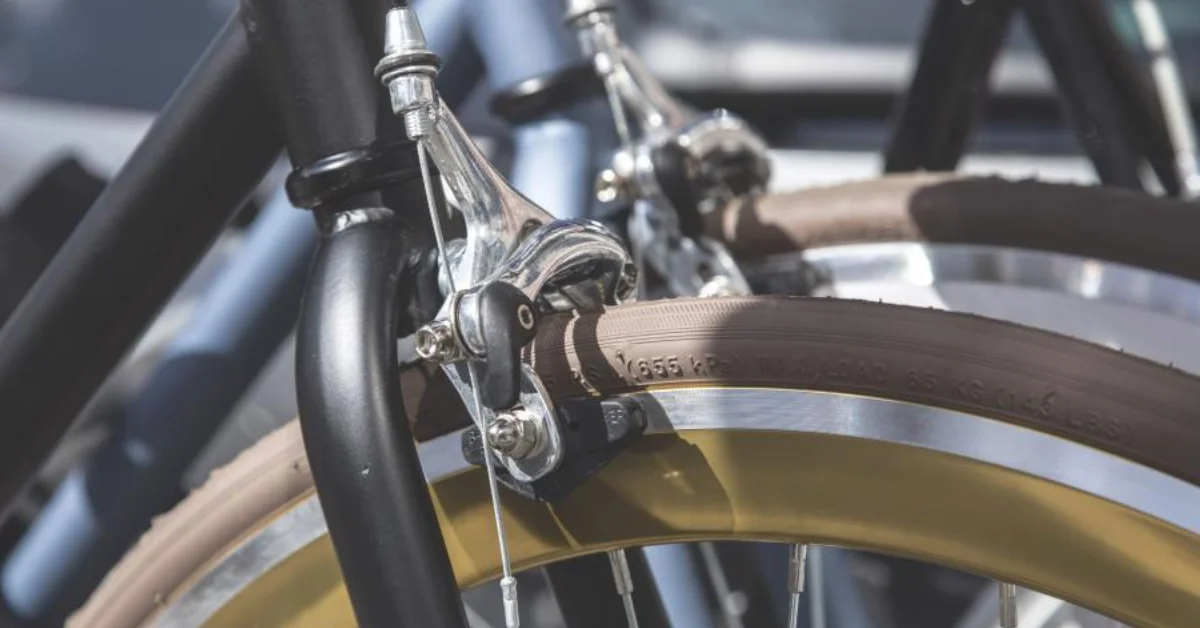When it comes to maintaining your bicycle, ensuring proper braking is crucial. But with a vast array of bike models and components, a common question arises: Are bike brake pads universal?
This question holds weight, as mismatched pads can compromise braking performance and even damage your bike’s rim. That said, let’s delve deeper into this guide that answers all your relevant queries when you want to replace your road bike brake pads.
Table of Contents
ToggleAre Bike Brake Pads Universal

The first question that arises when you want to replace rim brake pads is that are bike brake pads universal. Yes, they are!
However, it is their compound that sets them apart from each other. For instance, a few brake pads may have soft, non-metallic compounds. Similarly, others might feature hard metal ones.
Besides this, you may also find minor differences in the sizes and diameters of different bike brake pads.
Types of Bike Brake Pads
When it comes to bicycle brake pads types, they are categorized based on your bike’s braking system. Typically, there are two major classifications, including rim brake pads and disc brake pads.
Let’s have a broader look at both now that we have already discussed are bike brake pads universal:
1. Rim Brake Pads
This type of brake pad engages the rim of the wheel to slow down or stop your bike. Thus, they must be compatible with the rim material, which is usually aluminum or carbon. If we talk about further categorization, rim pad brakes are of two types:
- Cartridge Type (pad and shoe are attached permanently, and you must replace it entirely if it wears out)
- Non-cartridge type (it is possible to replace the pad independently of the shoe)
The second type is more cost-effective and makes maintenance of the bike much easier.
2. Disc Brake Pads
The design of disc brake pads is quite simple, and they focus more on the compound material that contacts the rotor. There are three major types of it:
| Type | Material Composition | Lifespan | Performance | Conditions Suitability |
| Metallic/Sintered | Hardened metal | Longest | Robust, especially in wet, high temps | Technical off-road biking |
| Organic/Resin | Organic materials + resin binder | Shorter | Quieter, good initial bite, quick bed-in | Normal conditions |
| Semi-Metallic | A blend of metal and organic materials | Moderate | A blend of durability, power, and modulation | Versatile |
Things to Consider When Buying a Bike Brake Pad
While the answer to are bike brake pads universal is a yes, the market is filled with several different options. Therefore, you must do a bit of research and choose one that best fits your bike’s model. Here are some factors to consider for this purpose:
- Shape: Visit the website of your bike’s manufacturer to see which brake pad shape is compatible with your bike’s model. It can either be triangular, circular, or rectangular.
- Compound: There are two major types of compound materials (semi-metallic and sintered), with many other options available. It’s an important factor that determines the lifespan and overall performance of your bike’s braking system.
- Reliability: Always purchase from a well-known brand like Shimano, Tektro, etc. Not getting a reliable product can put your safety at risk.
- Compatibility: Last but not least, the compatibility of the brake pad with your bike also matters a lot. For instance, if you ride a mountain bike, you may need a more robust brake pad than one used for normal commuting purposes.
When to Replace Bike Rim Brake Pads

It’s equally important to understand when to replace them for effective performance. The timing for replacing rim brake pads depends on various factors like their type, road conditions, frequency of riding, etc.
Let’s explore some signs that indicate your bicycle rim brake pads may need a replacement:
- Many brake pads are accompanied by different wear indicators, like a line or a hole. These either become prominent or disappear when your bike’s brake pad gets damaged to a critical level.
- If no wear indicator exists, you can evaluate the thickness of the pad to decide when to replace it. According to a rule of thumb, do so when it has worn down to less than 1 mm of braking compound above the pad that backs the plate.
- Another indicator for replacing brake pads is a noticeable decline in braking performance. In case the brake feels less responsive, squeaky, or requires extra force, you may need to replace the pads. However, this may occur due to contamination, so consider cleaning them initially.
- Any visible damage like cracking, glazing, or chunking of the pad makes it necessary to replace it immediately.
- If you ride in wet, gritty, or mountainous conditions, you may need to replace your bike’s brake pads more frequently. It is majorly because of debris and frequent braking that may lead to increased and early wear.
Bike Brake Pad Direction
So, after knowing the answer to are bike brake pads universal, you may also have queries regarding bike brake pads which way round. Worry not, as the below guide will help you through the process:
- When replacing your bike’s brake pad, look for any forward arrow on the brake. It’s what indicates which side is compatible with the installation of the new pad.
- If the brake pad holder of your bike has both a closed and open side, you must position the closed side towards the front.
- Finally, slide the new brake pad unit into its place. Make sure it fits properly.
- Repeat this process for the second brake pad as well.
Note: The orientation of your bike’s brake pad would depend on its brake system, so make sure you consult the instructions manual first.
Read More: 5 Crazy Factors About How Fast Can a BMX Bike Go
FAQs
What Thickness Do Brake Pads Need To Be Replaced?
If you are wondering what is the minimum thickness of a brake pad, then it has to be around ⅛ inches or 3.2 mm. This threshold ensures optimal braking performance and safety. It’s crucial to check brake pad thickness during routine vehicle maintenance to prevent brake failure.
How Long Do Road Bike Brake Pads Last?
Road bike brake pads can last between 1,000 and 3,000 miles, depending on riding conditions, brake pad quality, and riding style. Frequent braking, harsh conditions, and heavy usage can significantly reduce lifespan, necessitating more regular checks and replacements to ensure safety and performance.
Are Bike Rotors Universal?
Bike rotors are not universal; they come in various sizes and mount types to fit different bike models and brake systems. The most common diameters range from 140 mm to 160 mm, and the two main mounting standards are 6-bolt and CenterLock.
Which Bike Brake Pad Has The Longest Lifespan?
Metallic brake pads top the list when it comes to resilience. Since they are made of hard metal, they can easily withstand the harsh riding conditions.
Wrapping Up
So that was all about our bike brake pads universality. While they are universal on a broader level, the compound material and shape may have some variations.
Knowing this is crucial when replacing the brake pad to ensure its compatibility with your bike’s braking system. Similarly, the right brake pads ensure optimal stopping power and performance.
Therefore, be sure to consider all these aspects and ride safely!









